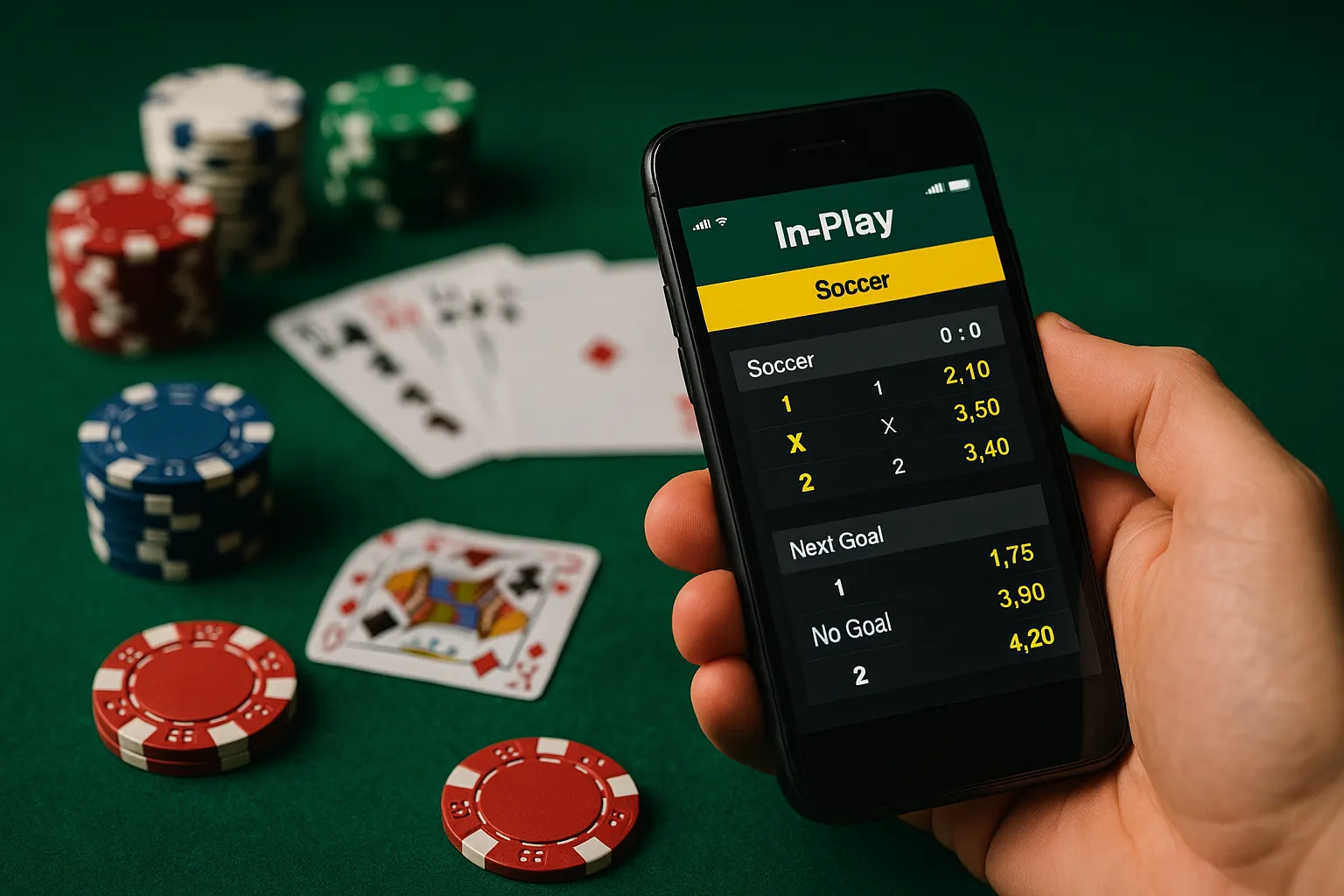The first time I dabbled with in-play betting, I was halfway through a dreary midweek Championship match. One team looked dead on its feet, odds swung wildly after a red card, and my finger hovered over “Back Over 2.5 Goals” like it was a nuclear launch code. Ten minutes later, a deflected corner went in and I felt like a genius. Two nights later, I chased a late NBA run and watched my bankroll melt faster than an ice cube on a roulette wheel. That’s the paradox: live betting can feel razor-sharp or ruinously impulsive—often in the same weekend.
So which is it? Smart edge or express lane to regret? Let’s dig in like people who have actually sweated a 93rd-minute VAR check.
The money angle matters as much as the tactics. If you do nail that perfect in-play read, getting your winnings out quickly makes a real difference to discipline. That’s why I vet operators for speed just as hard as I dissect their odds. You’ll see me talk about instant withdrawal casino options early and often—if your cash gets stuck in limbo, you’re more likely to punt it back on the next “can’t miss” live line.
What Makes In-Play Betting So Tempting?
In-play betting taps into our love of narratives. You’re not staring at static pre-match numbers anymore; you’re reacting to momentum, injuries, weather shifts, tactical subs, even a striker’s body language. Odds move like a heartbeat monitor. When you’re locked in, it feels like you’ve hacked the matrix. When you’re not, it’s like buying lottery tickets every five minutes.
Speed is the Feature and the Bug
Bookmakers update odds in seconds. Great if you’re prepared with trigger points (“If Team A drifts to 2.50 after conceding early, I’m in”). Terrible if you’re doomscrolling the markets after a near miss and just want to “get it back.” The very immediacy that gives you edge potential also creates emotional whiplash.
Edge vs. Impulse: How Do You Tell the Difference?
The line between a sharp in-play bet and a tilt-click is thinner than people admit. My personal litmus test: did I plan this scenario before kickoff? If I wrote “enter on under 1.5 goals at 65 minutes if xG stays low and ref is card-happy,” that’s strategy. If I just watched a fluky goal and feel a tingle, that’s dopamine.
Information You Can Actually Use in Real Time
Stats feeds now show live expected goals, passing maps, possession swings. The trick is knowing which metrics lag reality. xG updates after shots, not before momentum shifts. Eye test still matters: are midfielders gassed, is a full-back getting roasted, has the manager switched systems? Use the feed to confirm what you’re already seeing, not to chase numbers that might be a minute stale.
Bankroll Drain or Growth Engine?
Let’s talk bankroll velocity. Pre-match bets create a slow drip; in-play can be a fire hose. More markets, more swings, more temptation. I structure my bankroll with separate “live units.” Once they’re gone for the event, that’s it. It forces me to set a hard ceiling before the chaos starts. Without that, you’ll re-deposit in the 88th minute because “one more corner market can’t hurt.”
Cashing Out Matters More Than You Think
Winning live bets and then waiting days to withdraw is like dieting all week and leaving cake on the counter. Fast payouts let you physically disconnect. That’s why I screen for that instant withdrawal casino capability. If an operator can’t process a basic e-wallet cashout quickly, they fail my live-play checklist.
Psychology: The Trapdoor Under the Adrenaline
Live betting’s biggest edge is also its biggest trap: emotion. You feel involved, present, and decisive. That buzz tricks your brain into overconfidence, especially after one good call. I journal every in-play bet (stake, odds, rationale, result). When I skim that log on Sundays, patterns jump out: I lose most when I bet on sports I only half-follow or when I jump markets I didn’t prep for. Two tweaks—sticking to my core leagues and pre-writing scenarios—cut my live losses dramatically.
Delay and Discipline
The best hack I’ve used? A self-imposed 30-second delay before confirming any live bet unless it’s a pre-defined trigger. If the market moves away in those 30 seconds, so be it. Missing the price hurts less than chasing a bad read.
Market Mechanics: How Books Protect Themselves
Don’t forget the other side. Books throttle lines, suspend markets during key events, and bake in extra juice to cover volatility. Some even skew odds toward public narratives (“comeback incoming!”) because they know recreational bettors crave drama. If you consistently buy into storylines the crowd loves, you’re probably getting the worst of the price.
Beating the Suspend
Sharp live bettors set alerts and pounce the moment a market reopens after a suspension (goal check, VAR, time-out). Have your stake, selection, and stake size ready. You won’t beat algorithms to every line, but you can at least be first among humans.
Sport Matters: Football Isn’t Tennis Isn’t Basketball
Each sport has its own rhythm and opportunity windows. Football’s low-scoring nature means one event can swing odds massively. Tennis is perfect for momentum trading if you understand serve dynamics. Basketball’s constant scoring makes spreads feel fluid but also increases vigorish. I built separate frameworks: one for football (goal-timing, card risk, fatigue), one for tennis (serve hold %, injury tells), and one for hoops (pace, foul trouble, coach rotations). Mixing them up is where bankrolls go to die.
Tech and Tools: Use Them, Don’t Worship Them
Live odds alert apps, advanced stats feeds, and even community Discords are useful—but they can create noise. Pick a small suite of tools you truly understand. I use one odds screen, one stats provider, and a simple spreadsheet. Every additional tab is another distraction that pulls you back into reactive mode.
Streaming Lag Is Real
If your video stream lags behind the book’s data feed, you’re betting into the past. Use the fastest source you can (radio commentary can be quicker than TV, unbelievably). If you notice odds moving before you see the event, reduce stakes or switch markets, because you’re the one being gamed.
Responsible Edging: Can You Be “Smart” and Still Enjoy It?
You can. The key is building rules that respect both your analytical side and your human side. I schedule in-play sessions like meetings, with a start and end. I choose matches I’ll fully watch, not ones I half-follow while cooking dinner. I pre-define entry and exit points, and I treat every impulse bet as a red flag to step away.
So, Smart or Faster Losses?
Here’s my blunt verdict after hundreds of sessions:
-
In-play betting is smart when it’s structured: pre-planned triggers, strict bankroll segments, disciplined exits, and fast withdrawal habits to lock gains.
-
It becomes faster losses the moment you chase, guess, or let the book’s flashing numbers set your agenda.
Treat it like high-frequency trading, not a slot machine in your pocket. When you respect the speed, you can exploit it. When you don’t, it exploits you.
What the Near Future Looks Like
Expect even more micro-markets: next throw-in, next free throw, next double fault. AI-driven personalization will tempt you with “suggested” bets tailored to your history (be careful—those suggestions aren’t there to help you). On the bright side, regulation is catching up with stricter real-time affordability checks and session reminders. Use those tools. They’re a safety net, not an inconvenience.
My Closing Checklist
Ask yourself before every live session:
-
Do I have a written plan for this match or market?
-
Have I capped my live units and withdrawal target?
-
Am I using data to confirm, not decide?
-
Did I last eat, drink water, and sleep? (Seriously—fatigue triples dumb bets.)
If any answer is “no,” delay or downsize. You’ll thank yourself at full-time.










